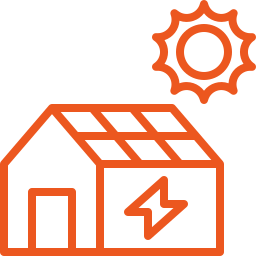Kenya - Katito Demo Site


Demo site description
The Katito Demo Site focuses on addressing pressing community needs by implementing innovative use cases for solar energy. Water scarcity, elevated levels of fluoride, and the presence of contaminants in surface and groundwater sources pose significant challenges in the region. These issues frequently result in outbreaks of waterborne diseases and raise public health concerns within the area. The solar-powered water system of the site addresses this issue by offering prepaid ATM water dispensers that provide clean and treated water.
In terms of mobility, the demo site is currently testing electric boda bodas, which provide a sustainable option in an area where fuel costs are a concern. In rural and peri-urban areas such as Katito, the presence of unreliable and costly grid electricity poses a major obstacle. The self-sustaining solar system of the demo site addresses this issue by providing a stable and cost-effective power supply, which is particularly important in an area where the reliability of grid power is a concern. By effectively harnessing solar energy and piloting innovative use cases and appliances the demo site offers a sustainable solution to tackle Katito’s urgent issues.
Demo site activities
Currently, within Katito’s unique socio-economic context, two innovative pilot use cases are being implemented in the Demo Site.
1. The site is testing and piloting an electric mobility use case as a sustainable affordable transportation solution to the rising fuel costs that are impacting peri-urban populations. Electric motorcycles (boda boda), also referred to as e-bikes, are equipped with retrofitted electric drivetrains. E-bikes function as an environmentally friendly substitute for conventional fuel-based motorcycles, promoting ecological preservation while offering economically viable transportation options fuelled by solar power.
2. Utilising Solar Energy for Potable Water: The demo site is fitted with a highly efficient solar water pumping technology that harnesses solar power to pump and treat groundwater. The water is then stored within specifically designated tanks and undergoes a purification procedure utilising reverse osmosis. After the purifying process, the water is transferred to storage tanks located at higher elevations. From there, it is distributed to water ATMs through a system that relies on gravity known as a gravity flow system. This water is then distributed and dispensed a series of prepaid ATM water dispensers that guarantees the availability of potable water that is both clean and accessible at all times.
Description of the problem addressed
In Katito, there is a lack of sustainable energy access, which exacerbates social inequalities and hinders economic and social development.
The scarcity of clean water is a pressing concern. Much of the community depends on surface water from rivers, which are frequently contaminated as a result of inadequate land use and management practices in the Lake Victoria basin. On the other hand, boreholes are sometimes utilised, although they frequently have elevated levels of fluoride, which presents an additional health hazard. The absence of clean water contributes to the prevalence of waterborne diseases, making up approximately 80% of communicable diseases in the area.
Fossil fuel-based transportation poses yet another challenge. Relying on petrol and diesel vehicles leads to increased fuel expenses for community members and contributes to the deterioration of the environment. The emissions produced by these vehicles contribute to air pollution, which has negative effects on both public health and the environment.
Demo Site objectives
1
Sustainable energy access: Establish self-sufficient solar hubs in peri-urban areas, equipped with solar panels, battery storage, and necessary infrastructure for powering various use cases appliances such as solar water pumping, fishing lanterns, electric two-wheelers, and other equipment. Incorporate water pumping and purification systems to provide access to clean and safe drinking water.
2
Conduct Testing and Validation of Business Models for Productive Use: Perform real-world experiments to test different scenarios in the practical implementation of solar energy, such as water purification, electric mobility, and agricultural uses. Utilise innovative methods to evaluate the economic feasibility and long-term sustainability of different use cases and appliances through sharing and circular economy practices.
3
Foster the adoption of Circular Economy practices: Collaborate with local users to jointly develop and implement strategies for energy storage component creation and reutilisation, with a specific emphasis on maximising the lifespan of lithium battery cells. Additionally, establish dedicated e-waste management centres to ensure responsible electric waste recycling practices.

Technology being tested
Self-sustaining solar energy system. The solar energy is used to pump and treat water as well as to power e-bikes.
Number of assets

Solar roofs
64 (33.992 kWp)

Batteries
24 (106 kWh)

Water pumps
1 (submersible)

Water tanks
5 (50,000 L)

reverse osmosis system
1 (6 m3/h)

Water atm
5 (20 L for 15 kshs)

e-motorbikes
6


